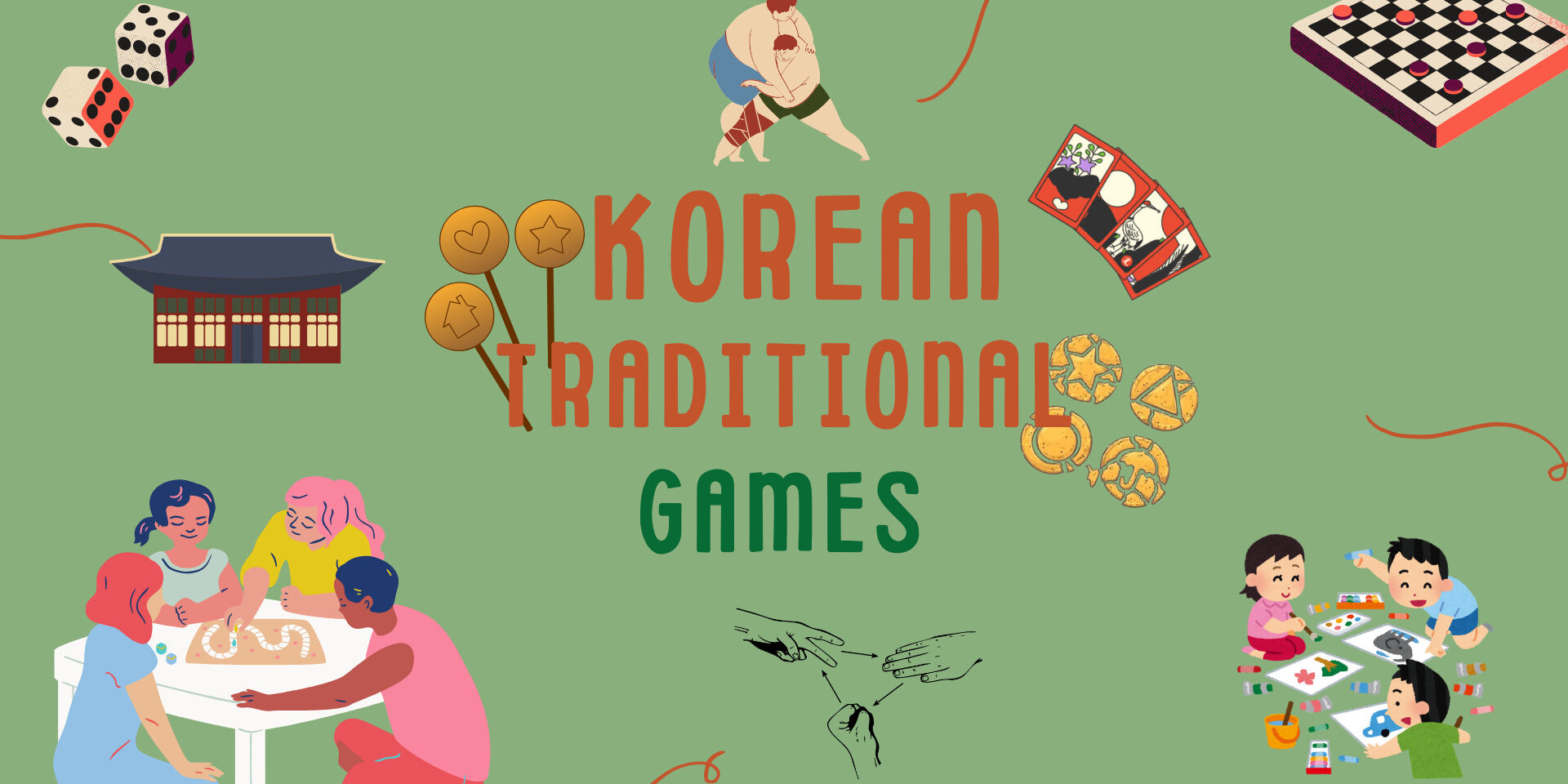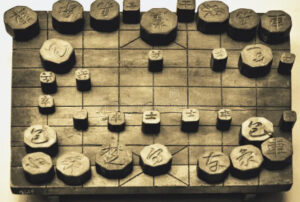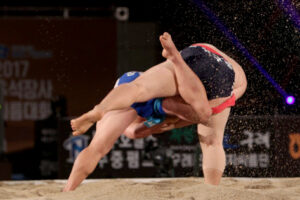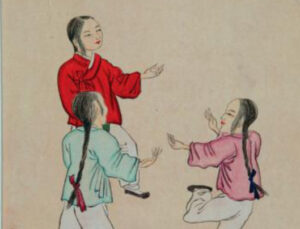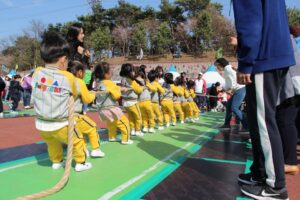Let’s take a dive into Korean Traditional Games!
The origins of traditional South Korean games lie in ancient folk beliefs. Due to the historical focus on agriculture on the Korean peninsula, people held strong beliefs in protective nature gods. Singing, dancing, and even exorcisms were common practices aimed at ensuring bountiful crops and the health of livestock.
I. Korean Traditional Games
Traditional Korean games have evolved from early beliefs and activities, remaining popular even today despite the fading of many associated beliefs. What specific traditional games exist in Korea? Let’s explore some examples.
- Ssireum (씨름)
Ssireum (씨름) is a traditional Korean style of wrestling that shares similarities with Japanese sumo wrestling. In a ssireum match, two players grapple in a sandy ring, earning points by successfully throwing their opponent to the ground.
In contemporary ssireum wrestling, competitors wear a belt (known as satba, 샅바) around their waist and one leg. They often use this belt to grip and maneuver their opponent, aiming to execute throws and gain an advantage during the match.
- Jegichagi (제기차기)
Jegichagi is akin to playing with a hacky sack, but with a unique Korean twist. In this game, participants use a “jegi,” which is essentially a paper-wrapped item containing a small coin, resembling a shuttlecock. The game starts by kicking the jegi among a group, aiming to prevent it from touching the ground. The player with the most successful kicks emerges victorious, and jegichagi can also be played individually.
Unlike the footbag of a hacky sack, jegi is crafted from paper wrapped around a coin, resembling a shuttlecock used in badminton. This traditional game is particularly popular among young people during winter and is often enjoyed during the Lunar New Year holiday festivities.
- Juldarigi (줄다리기)
Juldarigi is the Korean equivalent of “tug of war,” as seen in the recent Netflix series “Squid Game.” However, in real life, the game is meant for enjoyment rather than life-or-death stakes! Juldarigi is a traditional game often played by two teams during festivals and community gatherings. Beyond its popularity and fun factor, the game holds significant traditional and ritualistic meaning, particularly for agricultural communities.
For instance, it is believed that the outcome of the juldarigi game can forecast the upcoming year’s harvest. The game involves two ropes made from rice straws, connected by a peg in the center. Teams pull on the ropes from opposite ends, creating a competitive yet festive atmosphere.
II. Korean games popularized by Squid Game
- Mugunghwa Flower has bloomed
The game “Mugunghwa Flower has bloomed” debuted in the first episode of Squid Game, also known as “무궁화꽃이 피었습니다” in Korean. It resembles the childhood game “Red Light, Green Light” played worldwide.In this game, one player, designated as “it,” stands facing away from others. They call out “green light,” allowing players to move forward. But upon saying “red light” and turning around, players must freeze. Being caught moving results in elimination. The first player to reach “it” becomes the new chaser.
In the Korean variant, instead of colors, players move during the phrase “mugunghwa flower has bloomed” and freeze afterward. Otherwise, gameplay remains unchanged.
- Dalgona Challenge
In this game, participants are given flat candies made from melted sugar and baking soda, resembling a honeycomb texture. Each candy features one of four possible shapes: a triangle, circle, star, or umbrella. The objective is to remove the shape without breaking the candy. In Squid Game, these shapes were prominently featured.
The game originated from street vendors who sold these candies during the 1950s and 1960s. In its original form, successfully removing the shape from the Dalgona candy earned children a free bonus treat. Actual Dalgona candies used for the game can now be found in convenience stores throughout Korea.
III. Some popular Korean Games
- Rock Paper Scissors (가위 바위 보 | gawi bawi bo)
While known by its own name in Korea, 가위 바위 보 (gawi bawi bo) is a game recognized worldwide. In Korea, it follows the same rules as elsewhere: players shake their fists and reveal one of three symbols, with rock defeating scissors, scissors defeating paper, and paper defeating rock.
- Cham Cham Cham
Cham Cham Cham is a two-player game commonly featured on variety shows. It’s remarkably straightforward: players face each other and point either left or right.The objective is simple: if the opposing player turns their head in the same direction you’ve pointed, you win. Keep alternating directions to maintain your winning streak!
So, which traditional game are you excited to try? Don’t forget to enjoy yourself and build fond memories!
By Tya BERAMICE-DRACAN

